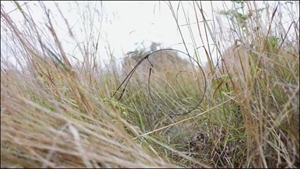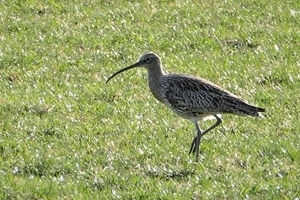By Matt Goodall, GWCT Cymru Advisor and Head of Education
 On 16 May, final amendments were considered for the Agriculture (Wales) Bill in the Senedd. This bill outlines the Welsh Government’s proposal to prohibit the use of any snare (including licensed use) or other cable restraint. A previous blog on how Welsh Government arrived at this stage can be found here.
On 16 May, final amendments were considered for the Agriculture (Wales) Bill in the Senedd. This bill outlines the Welsh Government’s proposal to prohibit the use of any snare (including licensed use) or other cable restraint. A previous blog on how Welsh Government arrived at this stage can be found here.
It is hugely disappointing that, despite huge amounts of work, time and effort highlighting the GWCT’s research in this area, an amendment tabled to enable the strict licensing of Humane Cable Restraints (HCRs) for conservation purposes, which would include conditions far above and beyond current legislation, was not accepted by Welsh Government.
Those unaware of the research in this area may think banning HCRs is a good thing. They may listen to Lesley Griffiths MS and Vikki Howells MS when they say the words “so-called humane cable restraints” and believe that code-compliant snares are not humane. The terminology ‘humane cable restraint’ was coined to differentiate between snares of old and the modern code-compliant snare.
Worldwide, the term ‘snare’ is used to describe a killing device, whereas a HCR is a restraining-only, live capture device, scientifically tested and field trialled and found to surpass standards of the Agreement on International Humane Trapping Standards (which the Welsh Government is signed up to).
When set in accordance with the code of practice, the features of this device such as the stop (fixed at 26cm) and breakaway clip increase selectivity and, most importantly, ensure that animals caught are held unharmed (scientifically proven). The placement of the stop allows brown hare self-release and the break-away clip ensure badgers, deer and livestock can self-release. Any non-target animals that do not self-release can be safely released unharmed by the operator, and are done so following twice daily checks of any set HCR.
It is worth mentioning that GWCT research using GPS collars to track foxes and learn about their movements across the landscape would not have been possible without using cable restraints. Those who think these devices cannot possibly catch animals humanely might not be aware that we have been able to successfully trap, fit collars to, and release foxes completely unharmed to study for many, many years using these restraints. We know first hand these devices are humane and would not be advocating their use if they were not.
So why is the GWCT so disappointed that Welsh Government has seemingly closed the door on any future licensing opportunity? After all, many who release game might report that they now rarely use these devices, and there are few wild game shoots left in Wales.
However, our research demonstrates the conservation benefits of predation management to many other species, and that the humane cable restraint plays an incredibly important role within this management. Therefore, based on the available evidence, we are incredibly concerned that the future of species such as curlew, lapwing and black grouse in Wales has been dealt a hammer blow by this decision.
 Curlew are forecast to become extinct as a breeding bird in Wales by 2033 if declines continue. Without this tool in the toolbox, it may be sooner. Yes, those few curlew that fledged this year and those from recent years may remain in the Welsh countryside for the next 20 years, and yes, we will still receive winter migrants to Welsh shores in the winter. However, we will have fewer and fewer fledging curlew to replace that ageing population and they will eventually disappear from our Welsh countryside forever – a very sobering and extremely sad thought that our children and grandchildren will not witness this iconic species breeding in Wales in the future.
Curlew are forecast to become extinct as a breeding bird in Wales by 2033 if declines continue. Without this tool in the toolbox, it may be sooner. Yes, those few curlew that fledged this year and those from recent years may remain in the Welsh countryside for the next 20 years, and yes, we will still receive winter migrants to Welsh shores in the winter. However, we will have fewer and fewer fledging curlew to replace that ageing population and they will eventually disappear from our Welsh countryside forever – a very sobering and extremely sad thought that our children and grandchildren will not witness this iconic species breeding in Wales in the future.
Under the Environment (Act) Wales and the Well-being of Future Generations (Wales) Act, Welsh ministers are meant to protect our biodiversity in Wales. However, contrary to these acts, they have now put the conservation of these species in serious doubt.
There will be those out there who do not believe this to be true. How can it be if the RSPB and Wildlife Trusts do not think the same? It is true that the RSPB does not use HCRs on its reserves as part of its predation control policy. However, it is worth pointing out that it has not found a way to successfully increase fledging success of curlew to above 0.55 chicks per pair, i.e. one chick per two pairs to stop the decline and maintain the population.
In the recent D. Douglas RSPB paper, they show that shooting 500 foxes in four years at six different sites did not improve curlew fledging success. Furthermore, at their Life project site in Wales, they again have not improved curlew fledging success above the level needed to maintain a population, despite killing over 200 foxes in recent years. Additionally, their flagship Lake Vyrnwy Reserve in Wales is at the point of local curlew extinction, despite huge amounts of money spent on delivering pristine curlew habitat.
On the other hand, GWCT research demonstrates curlew, lapwing, golden plover, black grouse, hen harrier, red grouse, grey partridge and brown hare – all Section 7 species under the Environment (Wales) Act – are capable of population recoveries when predation management includes HCRs.
Our Upland Predation Experiment demonstrated that curlew increased from 15% of pairs fledging young to 51% of pairs fledging young – an increase sufficient to surpass population maintenance (i.e. increase the population). In this example, restraints were used to catch 26% of foxes culled. It is highly likely the conservation successes of that experiment would not have been achieved without the use of restraints, as the RSPB has demonstrated.
Additionally, looking at nine case studies, we found that percentages of foxes caught in restraints as part of cull programmes ranged from 10% in the Avon Valley, where lapwing numbers have nearly doubled, to 80% on a North Wales moor where 93% of curlew pairs studied fledged young.
The average percentage of foxes caught in restraints as part of a cull programme in these studies was 37%. This evidence cements our belief that HCRs are vital for conservation efforts of the above vulnerable species, and that there is no other method that efficiently allows fox management during the bird breeding season when vegetation height limits fox shooting opportunities.
This move by Welsh Government highlights their inability to comprehend the complexities of both fox management and vulnerable species conservation. For Lesley Griffiths MS to state within the Senedd that “the most efficient method of fox control is the use of rifles with thermal-image scopes at night, particularly during the winter and early spring while vegetation is lower and, of course, before nesting begins” could not make this point clearer.
Whilst rifle and thermal imaging might be effective for livestock protection as an example, it certainly is not the most efficient method of managing foxes to protect vulnerable wildlife, and is only part of the solution, as GWCT evidence demonstrates. The RSPB has demonstrated what happens to curlew when you do not effectively manage foxes whilst the vegetation is higher, and for Welsh Government to not grasp that foxes consistently migrate into breeding bird areas during late spring and summer will be to the huge detriment of these species in Wales’ future.